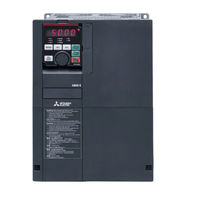Mitsubishi Electric FR-A870-02860-E Manuals
Manuals and User Guides for Mitsubishi Electric FR-A870-02860-E. We have 2 Mitsubishi Electric FR-A870-02860-E manuals available for free PDF download: Instruction Manual, Assembly & Installation Manuallines
Mitsubishi Electric FR-A870-02860-E Instruction Manual (674 pages)
Brand: Mitsubishi Electric
|
Category: Inverter
|
Size: 16 MB
Table of Contents
Advertisement
Mitsubishi Electric FR-A870-02860-E Assembly & Installation Manuallines (56 pages)
Brand: Mitsubishi Electric
|
Category: Inverter
|
Size: 3 MB
Table of Contents
Advertisement
Related Products
- Mitsubishi Electric FR-A870-02300-E
- Mitsubishi Electric FR-A872-E
- Mitsubishi Electric FR-A872-05690-E
- Mitsubishi Electric FR-A872-06470-E
- Mitsubishi Electric FR-A872-07150-E
- Mitsubishi Electric FR-A872-P
- Mitsubishi Electric FR-A820-01250-GF (22K)
- Mitsubishi Electric FR-A840-04320-GF (160K)
- Mitsubishi Electric FR-A840-02600-E-R2R
- Mitsubishi Electric FR-A802-10940-P

